
- Champalimaud
- ELBS Team
- Profile Liquid Biopsy Research
-
Champalimaud
The Champalimaud Foundation (CF) is a private, non-profit organisation dedicated to research excellence in biomedical science. Completed in 2010, the Champalimaud Centre for the Unknown (CCU) is a state-of-the-art centre where an unconventional high-risk/high-gain research program (Champalimaud Research –CR), with its three programmes – the Champalimaud Neuroscience Programme (CNP), the Physiology and Cancer Programme (PCP), and the Experimental Clinical Research Programme (ECR), runs in parallel with clinical research in cancer (Champalimaud Clinical Centre – CCC). With an original focus on a systems approach to brain function and behaviour, the CR expanded its organismic research, bringing in molecular and cell biological expertise while ensuring an increased interface between CR and the CCC. CR is organised in 26 research groups (circa 400 researchers) leading independent curiosity-based research programs supported by scientific and technical platforms that combine research and development with high quality services in a plethora of technological areas, and by highly specialised research management and science communication units providing tailored and innovative support. As a result, the CF research community produced a sound scientific record of 723 peer-reviewed original publications (2008-2019; h-index 72; 24,383 summed citations without self-citations) and has been very successful at securing competitive international funding as attested by its 11 active ERC grants.
-
ELBS Team
Bruno Costa-Silva, PhD
Group Leader
Champalimaud Centre For the Unknown
Avenida de Brasilia
1400-038 Lisbon
Portugal
bruno.costa-silva@research.fchampalimaud.org
-
Profile Liquid Biopsy Research
Cancer types Pancreatic, Colorectal, Pulmonary, Ovary Cancer Clinical application Diagnosis and Follow up of Cancer Disease Liquid Biopsy source Plasma (EDTA Tubes) Technologies available for Liquid Biopsy Isolation and characterisation of Extracellular Vesicles Key publications Maia, J., Batista, S., Couto, N., Gregório, A.C., Bodo, C., Elzanowska, J., Strano Moraes, M.C., Costa-Silva, B#. Population Analysis of Extracellular Vesicles in Microvolumes of Biofluids. BioRxiv. BioRxiv 2020.01.10.895037, doi:10.1101/2020.01.10.895037 (2020). Under review at the Journal of Extracellular Vesicles. Description of a new method that enables the study of EVs populations in microvolumes of non-purified biofluids, which will be key for the study of protein interactions of EVs in this project.
Rodrigues, G.; Hoshino, A.; Kenific, C. M.; Matei, I. R.; Steiner, L.; Freitas, D.; Kim, H. S.; Oxley, P. R.; Scandariato, I.; Casanova-Salas, I.; Dai, J.; Badwe, C. R.; Gril, B.; Tesic Mark, M.; Dill, B. D.; Molina, H.; Zhang, H.; Benito-Martin, A.; Bojmar, L.; Ararso, Y.; Offer, K.; LaPlant, Q.; Buehring, W.; Wang, H.; Jiang, X.; Lu, T. M.; Liu, Y.; Sabari, J. K.; Shin, S. J.; Narula, N.; Ginter, P. S.; Rajasekhar, V. K.; Healey, J. H.; Meylan, E.; Costa-Silva, B.; et al., Tumour exosomal CEMIP protein promotes cancer cell colonization in brain metastasis. Nat Cell Biol. 2019 Nov 4. Detailed demonstration on how tumor-derived EVs are responsible for the formation of brain niches supportive of brain metastasis. In this work I contributed to the experimental design and discussion of results.design and discussion of results.
Ferreira, N., Marques, A., Águas, H., Bandarenka, H., Martins, R., Bodo, C., Costa-Silva, B.#*, Fortunato, E*. Label-Free Nanosensing Platform for Breast Cancer Exosome Profiling. ACS Sensors. 2019 Aug 23;4(8):2073-2083. *These authors share the corresponting authorship. Description of a new method, based on Raman spectroscopy that enables the fast distinction between EVs from healthy or cancerous breast epithelium.
Zheng, J., Hernandez, J. M., Doussot, A., Bojmar, L., Zambirinis, C. P., Costa-Silva, B., et al. Extracellular matrix proteins and carcinoembryonic antigen-related cell adhesion molecules characterize pancreatic duct fluid exosomes in patients with pancreatic cancer. HPB (Oxford) 20, 597-604, doi:10.1016/j.hpb.2017.12.010 (2018). I contributed to the experimental design of a strategy that uses pancreatic fluid as a source of pancreatic cancer biomarkers in EVs.
Hoshino, A.*, Costa-Silva, B.*, Shen, T. L.*, et al. Tumour exosome integrins determine organotropic metastasis. Nature. 2015 Nov 19;527(7578):329-35. Here we define for the first time of the biological basis of the patterns of tumor exosomes distribution throughout the organism and how it dictates tumor metastatic organotropism.
- CSEM
- ELBS Team
- Profile Liquid Biopsy Research
-
CSEM

CSEM is a groundbreaking innovation hub for precision microtechnologies and digitalization. Our mission is to develop and transfer world-class technologies to the industrial sector. As a bridge and catalyst for the transfer of technology and know-how between science and economy, we continually adapt our research focus to meet industry’s needs. This constant re-adaptation has taken our center, which was founded in 1984, beyond our historic ties with watchmaking. Today, with 500+ employees and 5 sites in Switzerland, we supply a broad range of markets, including medical, life sciences, automotive, machine tools and space exploration, with an even broader range of technological solutions. To enable liquid biopsy applications in the clinic, we support our biological, clinical and industrial partners along the whole value chain with tailor-made solutions, which range from functionalized precision membranes for biological sample preparation to machine learning algorithms for clinical data processing.
-
-
ELBS Team

Samantha Paoletti, PhD
Research & Business Dev. Manager
Bahnhofstrasse 1
7302 Landquart
Switzerland
samantha.paoletti@csem.ch

Marc Zinggeler, PhD
R&D Engineer / Project Leader
Tramstrasse 99
4132 Muttenz
Switzerland
marc.zinggeler@csem.ch
-
-
Profile Liquid Biopsy Research
Cancer types No restrictions Clinical application No restrictions Liquid Biobsy Source No restrictions Technologies available for liquid biopsy -Surface coating and functionalization
-High-precision membranes and substrates
-Microfluidics and fluidic handling
-Automatization and robotics
-Optical and electrochemical sensing
-Exosome isolation and fractionation
-Microphysiological systems for disease modeling
-Machine learningKey publications F. Kurth, E. Györvary, S. Heub, D. Ledroit, S. Paoletti, K. Renggli, V. Revol, M. Verhulsel, G. Weder, F. Loizeau, Chapter 3 - Organs-on-a-chip engineering, Organ-on-a-chip, academic Press 2020: 47-130
M. Zinggeler, T. Brandstetter, J. Rühe, Biophysical Insights on the Enrichment of Cancer Cells from Whole Blood by (Affinity) Filtration. Sci Rep 2019; 9: 1246.
M. Zinggeler, A. Luu-Dinh, C. Schneider, A. Lücke, D. Schlup, T. Offermans, G. Basset, I. Zhurminsky, S. Fricke, Development of Scalable Fabrication Methods for High-precision Membranes, CSEM Scientific and Technical Report 2019: 52
S. F. Graf, S. Berchtold, T. Volden, V. Revol, Automated, Disposable Sample Preparation Cartridge for Complementary Diagnostics, CSEM Scientific and Technical Report 2019: 54
S. Heub, G. Voirin, R. Pugin, M. Despont, T. Bauert, A. Tzannis, G. Weder, Disposable Glass Microfluidics for Nucleic Acids Bioassays, CSEM Scientific and Technical Report 2019: 56
- Erasmus MC
- ELBS Team
- Profile Liquid Biopsy Research
-
Erasmus MC
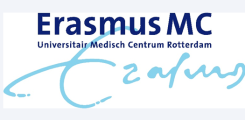

The department of Medical Oncology is one of the departments of the Erasmus MC, the largest university medical center in the Netherlands with more than 14,000 employees. Within the Erasmus MC, the department is part of the Erasmus MC Cancer Institute in which all departments involved in cancer care, education and/or research work together. In addition to providing care to patients with solid malignancies and training of oncology students and residents, the department of medical oncology focuses strongly on clinical and translational research. Researchers from the department have had coordinating roles in studies impacting the world-wide clinical treatment standards in several tumor types including testicular cancer, prostate cancer, bladder cancer, soft tissue sarcomas, and esophageal cancer. Apart from the more than 150 ongoing clinical studies, both pharma- and investigator-initiated, one of the research areas of interest of the department is the development and testing of minimally invasive techniques to capture the molecular characteristics of tumor cells important for treatment decision making. Studies have been done on the robustness of different technologies for liquid biopsies and numerous studies have been done to assess the clinical value of liquid biopsies including in total more than 3,500 patients.
-
-
ELBS Team
Prof. dr. Stefan Sleijfer, MD, PhD
Medical Oncologist and Head of Department Medical Oncology
Dr. Molewaterplein 40
3015 GD Rotterdam Netherlandss.sleijfer@erasmusmc.nl
Prof. dr. John Martens, PhD
Head of lab Translational Cancer Genomics and Proteomics, Department of Medical Oncology
Dr. Molewaterplein 40
3015 GD Rotterdam Netherlandsj.martens@erasmusmc.nl
Dr. Jaco Kraan, PhD
Lab Translational Cancer Genomics and Proteomics, Department of Medical Oncology
Dr. Molewaterplein 40
3015 GD Rotterdam Netherlandsj.kraan@erasmusmc.nl
-
Profile Liquid Biopsy Research
Cancer types Breast cancer, prostate cancer, colorectal cancer, bladder cancer, melanoma Clinical application Prognostic and predictive value of liquid biopsies, value as early marker of response. Liquid Biobsy Source Blood, plasma, liquor Technologies available for liquid biopsy CellSearch, Cytotrack, VyCAP, several NGS platforms Biobank Solid tumors (plasma) Key publications Priestley P, Baber J, Lolkema MP, Steeghs N, de Bruijn E, Shale C, Duyvesteyn K, Haidari S, van Hoeck A, Onstenk W, Roepman P, Voda M, Bloemendal HJ, Tjan-Heijnen VCG, van Herpen CML, Labots M, Witteveen PO, Smit EF, Sleijfer S, Voest EE, Cuppen E. Pan-cancer whole-genome analyses of metastatic solid tumours. Nature. 2019 Nov; 575(7781):210-216. doi: 10.1038/s41586-019-1689-y
Angus L, Smid M, Wilting SM, van Riet J, Van Hoeck A, Nguyen L, Nik-Zainal S, Steenbruggen TG, Tjan-Heijnen VCG, Labots M, van Riel JMGH, Bloemendal HJ, Steeghs N, Lolkema MP, Voest EE, van de Werken HJG, Jager A, Cuppen E, Sleijfer S, Martens JWM. The genomic landscape of metastatic breast cancer highlights changes in mutation and signature frequencies. Nat Genet. 2019 Oct;51(10):1450-1458. doi: 10.1038/s41588-019-0507-7
Onstenk W, Sieuwerts AM, Kraan J, Van M, Nieuweboer AJ, Mathijssen RH, Hamberg P, Meulenbeld HJ, De Laere B, Dirix LY, van Soest RJ, Lolkema MP, Martens JW, van Weerden WM, Jenster GW, Foekens JA, de Wit R, Sleijfer S. Efficacy of Cabazitaxel in Castration-resistant Prostate Cancer Is Independent of the Presence of AR-V7 in Circulating Tumor Cells. Eur Urol. 2015 Dec;68(6):939-45. doi: 10.1016/j.eururo.2015.07.007
van Dessel LF, Beije N, Helmijr JC, Vitale SR, Kraan J, Look MP, de Wit R, Sleijfer S, Jansen MP, Martens JW, Lolkema MP. Application of circulating tumor DNA in prospective clinical oncology trials - standardization of preanalytical conditions. Mol Oncol. 2017 Mar;11(3):295-304. doi: 10.1002/1878-0261.12037
Sieuwerts AM, Kraan J, Bolt J, van der Spoel P, Elstrodt F, Schutte M, Martens JW, Gratama JW, Sleijfer S, Foekens JA Anti-epithelial cell adhesion molecule antibodies and the detection of circulating normal-like breast tumor cells. .J Natl Cancer Inst. 2009 Jan 7;101(1):61-6. doi: 10.1093/jnci/djn419
- Hahn-Schickard
- ELBS team
- Profile Liquid Biopsy Research
-
Hahn-Schickard
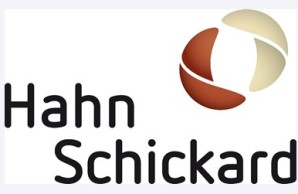

Lab-on-a-chip – from the initial idea to the final product. Hahn-Schickard stands for client- and industry-oriented, application-driven research, development, and production with microsystems. With a total of 250 employees at three sites in the Southwest of Germany, we develop innovative products and technologies in research fields with a strong future impact such as healthcare, internet of things, information and communication technologies, sustainable mobility, as well as environmental and natural resources. At the site in Freiburg, the R+D service provider focusses on automation solutions for diagnostics. Fields of research are the automation of Liquid Biopsy workflows and sample preparation for next generation sequencing. With an in-house pilot line, Hahn-Schickard is able to support the product visions of its customers effectively – from the design stage to serial production.
-
-
ELBS team
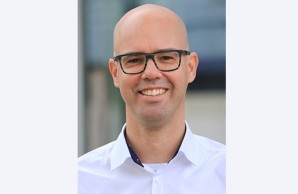
Dr. Tobias Hutzenlaub
Group leader Microfluidic Platforms
Georges-Koehler-Allee 103
79110 Freiburg
Germany
Tobias.Hutzenlaub@Hahn-Schickard.de

Peter Jülg
Group leader Microfluidic Platforms
Georges-Koehler-Allee 103
79110 Freiburg
Germany
Peter.Juelg@Hahn-Schickard.de
-
-
Profile Liquid Biopsy Research
Cancer types Colorectal cancer, melanoma, acute lymphoblastic leukemia Clinical application Monitoring of therapy response, early detection of relapse Liquid Biopsy source blood, bone marrow Technologies available for Liquid Biopsy Centrifugal microfluidic platform consisting of processing device (ready for certification in 2020) and application specific microfluidic chips for ctDNA extraction, qPCR, dPCR and sample preparation for next generation sequencing. Key publications O. Strohmeier, M. Keller, F. Schwemmer, S. Zehnle, D. Mark, F. von Stetten, R. Zengerle and N. Paust, Centrifugal microfluidic platforms: advanced unit operations and applications, Chem. Soc. Rev., 2015, 44, 6187
P. Juelg, M. Specht, E. Kipf, M. Lehnert, C. Eckert, M. Keller, T. Hutzenlaub, F. von Stetten, R. Zengerle and N. Paust, Automated serial dilutions for high-dynamic-range assays enabled by fill-level-coupled valving in centrifugal microfluidics, Lab Chip, 2019, 19, 2205
J.F. Hess, T.A. Kohl, M. Kotrová, K Rönsch, T. Paprotka, V. Mohr, T. Hutzenlaub, M. Brüggemann, R. Zengerle, S. Niemann, N. Paust, Library preparation for next generation sequencing: A review of automation strategies, Biotechnology Advances 2020, in press
J. Friedrich Hess, M. Kotrová, S. Calabrese, T. Hutzenlaub, R. Zengerle, M. Brueggemann, N. Paust, Automation of amplicon-based library preparation for next generation sequencing by centrifugal microfluidics, 2020, under review
- Ipatimup
- ELBS Team
- Profile Liquid Biopsy Research
-
Ipatimup


The Institute of Molecular Pathology and Immunology of the University of Porto - Ipatimup – is the leading cancer research institute in Portugal and was established in 1989 under the aegis of the University of Porto. The institute is a founding member of the i3S – Institute for Research and Innovation in Health and of the Porto Comprehensive Cancer Center. The institutes’ objectives are to perform research and graduate training in human pathology, oncobiology and population genetics having as main research fields tumor pathology, population genetics and gene-environment interaction in precancerous and cancerous diseases. The institute is strategically located in a campus with a strong focus of Health, next to the largest hospital in the Region and the Oncology Institute of Porto (IPO) as well as the Faculty of Medicine potentiating the scientific knowledge as a means of delivering innovative clinical and translational research in cancer. The institute has state of the art facilities, including a Proteomic core facility, a Genomic and Bioinformatic core facility, advanced microscopy facility, and an animal house with in vivo experimental models. Finally, Ipatimup has an ISO15189 and CAP accredited diagnostic laboratory devoted to molecular and traditional pathology. This laboratory routinely uses next generation sequencing and digital PCR for tumor and liquid biopsy genetic characterization.
-
-
ELBS Team

Prof. José Carlos Machado
Vice- president
Rua Júlio Amaral de Carvalho,45
4200-135 Porto
Portugaljosem@ipatimup.pt
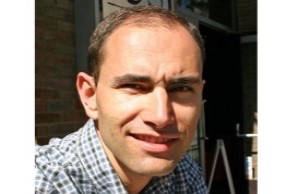
Prof. José Luis Costa
Principal investigator
Rua Júlio Amaral de Carvalho,45
4200-135 Porto
Portugaljcosta@ipatimup.pt
-
-
Profile Liquid Biopsy Research
Cancer types Lung cancer, breast cancer, colorectal cancer, pancreatic cancer Clinical application Detection of primary cancer and relapse, therapy monitoring, identification of biomarkers and resistance mechanisms Liquid Biobsy Source Blood, plasma Technologies available for liquid biopsy Next generation sequencing, molecular barcode NGS, digital PCR, Nanoparticle Tracking Analysis (NTA) Biobank solid tumors, blood, plasma, urine Key publications Joana Fernandes Marques, Susana Junqueira-Neto, Jorge Pinheiro, Jose Carlos Machado and Jose Luis Costa (2020) Induction of apoptosis increases sensitivity to detect cancer mutations in plasma. European Journal of Cancer (in press).
Gil Pinheiro, Tania Pereira, Catarina Dias, Claudia Freitas, Venceslau Hespanhol, Jose Luis Costa, Antonio Cunha, and Helder P. Oliveira (2020) Identifying relationships between imaging phenotypes and lung cancer-related mutation status: EGFR and KRAS. Scientific Reports (in press).
Gabriela Fernandes, Maria Jacob, Natalia Martins, Jose Carlos Machado, Venceslau Hespanhol and Jose Luis Costa (2019) Targeted gene next-generation sequencing panel in patients with advanced lung adenocarcinoma: Paving the way for clinical implementation. Cancers 11 (9).
Joana Fernandes Marques, Joana Pereira Reis, Gabriela Fernandes, Venceslau Hespanhol, Jose Carlos Machado and Jose Luis Costa (2019) Circulating Tumor DNA: A Step into the Future of Cancer Management. Acta Cytologica 63 (6), 456-465.
Susana Junqueira-Neto, Ines Batista, Jose Luis Costa and Sonia Melo (2019) Liquid Biopsy beyond Circulating Tumor Cells and Cell-Free DNA. Acta Cytologica 63 (6), 479-488.
- IRCCS Regina Elena Cancer Research Institute
- ELBS Team
- Profile Liquid Biopsy Research
-
IRCCS Regina Elena Cancer Research Institute

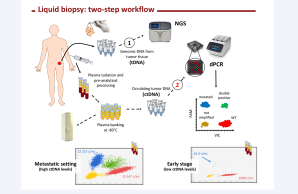
The Regina Elena Institute (IRE) is one of the two twin Institutes forming Istituti Fisioterapici Ospitalieri (IFO). Founded in 1934, IRE is possibly the oldest Cancer Research Institute in Europe. It includes research laboratories, clinical research services and hospital assistance staffed with >1000 units of personnel. IRE is a member of the ‘Union International Contre le Cancer’ (U.I.C.C.), of the European Organization of Cancer Institutes (O.E.C.I.), of the European Organization for Research and Treatment of Cancer (E.O.R.T.C. - Early ClinicaI Trial Group), and is referral center of the World Health Organization (WHO). Since 2015 IRE has been accredited as O.E.C.I. Comprehensive Cancer Center. IRE actively investigates mechanisms of neoplastic transformation and progression using transcriptomics, proteomics, molecular diagnosis, predictive oncology, and aims at developing targeted therapeutics. IRE features a fully certified BioBank (BB-IRE) for tissue and liquid biopsy. Since 2016 we perform Liquid Biopsy in the standard of care setting (EGFR, Lung cancer). The research laboratories are organized in a large 2500 square meter open space including central facilities. Pre-clinical and co-clinical (PDx) animal studies are ongoing, including a focus on liquid biopsy. IRE has participated and/or is currently involved in several H2020 EU project on liquid biopsy including ULTRAPLACAD (www.ultraplacad.eu), AiPBAND (www.aipband-itn.eu), and OncNGS (http://oncngs.eu).
-
-
ELBS Team
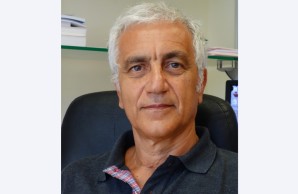
Prof. Gennaro Ciliberto
Scientific Director
IRCCS Regina Elena Cancer Research Institute
Via Elio Chianesi 53
00144 Rome
Italy
gennaro.ciliberto@ifo.gov.it

Dr. Patrizio Giacomini
Principal investigator
Oncogenomics and Epigenetics
Via Elio Chianesi 53
00144 Rome
Italy
patrizio.giacomini@ifo.gov.it
-
-
Profile Liquid Biopsy Research
Cancer types Solid tumors (e.g. lung, breast, Gl-tract, melanoma, bladder, brain tumors, H&N cancer) and hematological malignancies (DLBCL). Rare tumors (sarcoma and thyroid). Clinical application ctDNA to assign target therapy in the context of the Standard of Care (SoC) setting, real-life clinical trials, and the activities of our Molecular Tumor Board (IRE-MTB). ctDNA to reveal actionable resistance to treatment. ctDNA in the peri-surgical period (Colorectal). Circulating fusion transcripts in rare tumors (sarcoma). miRNA signatures for diagnosis and treatment (melanoma, bladder, DLBCL, Colorectal). Liquid Biopsy and Radiogenomics. Liquid Biobsy Source Plasma, Cerebrospinal Fluid (CSF), urine, pleural effusions Technologies available for liquid biopsy Targeted and custom NGS panels; miRNome analysis. Thermofisher S5 and IonChef, Illumina MiSeq and NextSeq; nanostring and pyrosequencing equipment; conventional (Cobas z480 Roche) and digital (Thermofisher QuantStudio 3D) PCR (dPCR); Hamilton Robotic Station, DEParray Menarini; Affymetrix Station Biobank Tissue (BBIRE-T) and body fluids (BBIRE-L) BioBanking; >20.000 and >50.000 samples stored, respectively Key publications Regazzo G, Terrenato I, Spagnuolo M, Carosi M, Cognetti G, Cicchillitti L, Sperati F, Villani V, Carapella C, Piaggio G, Pelosi A, Rizzo MG.A restricted signature of serum miRNAs distinguishes glioblastoma from lower grade gliomas. J Exp Clin Cancer Res 2016 Jul 30;35(1):124. doi: 10.1186/s13046-016-0393-07. 2. Sinibaldi, A., C.
Sampaoli, N. Danz, P. Munzert, L. Sibilio, F. Sonntag, A. Occhicone, E. Falvo, E. Tremante, P. Giacomini, and F. Michelotti. Detection of soluble ERBB2 in breast cancer cell lysates using a combined label-free/fluorescence platform based on Bloch surface waves. Biosens Bioelectron 2017 92: 125-130.
Marchesi F, Regazzo G, Palombi F, Terrenato I, Sacconi A, Spagnuolo M, Donzelli S, Marino M, Ercolani C, Di Benedetto A, Blandino G, Ciliberto G, Mengarelli A, Rizzo MG. Serum miR-22 as potential non-invasive predictor of poor clinical outcome in newly diagnosed, uniformly treated patients with diffuse large B-cell lymphoma: an explorative pilot study. J Exp Clin Cancer Res. 2018 May 2;37(1):95. doi: 10.1186/s13046-018-0768-5.
Allegretti, M., B. Casini, C. Mandoj, S. Benini, L. Alberti, M. Novello, E. Melucci, L. Conti, R. Covello, E. Pescarmona, G. M. Milano, A. Annovazzi, V. Anelli, V. Ferraresi, R. Biagini, and P. Giacomini. Precision diagnostics of Ewing's sarcoma by liquid biopsy: circulating EWS-FLI1 fusion transcripts. Ther Adv Med Oncol 2018 10: 1758835918774337.
Allegretti, M., G. Cottone, F. Carboni, E. Cotroneo, B. Casini, E. Giordani, C. A. Amoreo, S. Buglioni, M. Diodoro, E. Pescarmona, S. Zazza, O. Federici, M. Zeuli, L. Conti, G. Cigliana, F. Fiorentino, M. Valle, P. Giacomini, and F. Spinella. Cross-sectional analysis of circulating tumor DNA in primary colorectal cancer at surgery and during post-surgery follow-up by liquid biopsy. Journal of Experimental & Clinical Cancer Research 2020 CR 39: 69.
- KU/UZ Leuven
- ELBS Team
- Profile Liquid Biopsy Research
-
KU/UZ Leuven
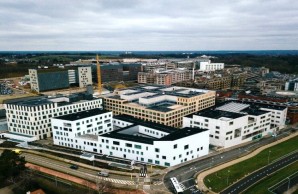
The Center for Human Genetics (CME) at the University of Leuven, conducts cutting edge research within the areas of human genetics and genomics in hereditary diseases and cancer. We put our clinical services and scientific knowhow at the disposal of our patients, by offering state of the art diagnostic and counseling facilities, and potential clinical strategies.
The laboratory for Cytogenetics and Genome Research spearheads technologies to map the causes and mechanisms underlying rare developmental disorders, improve diagnosis of rare diseases and prenatal and preimplantation genetic diagnosis to avoid transmission of disease alleles. The lab has over 15 years of experience in liquid biopsies, and was among the first to implement non-invasive prenatal testing (NIPT) in a clinical setting in Europe. The team demonstrated that NIPT profiling enables detection of incipient tumours, underpinning the value of cfDNA as a cancer screening tool. The latest in-house developed machine-learning-based pipeline offers a cost-effective screening tool for pan-cancer detection and typing from shallow whole-genome sequencing data.
The Cancer and pregnancy interdisciplinary research in the Gynaecological Oncology laboratory focuses on the diagnosis and treatment of pregnant cancer patients and monitoring of newborns that were prenatally exposed to chemotherapy. In this framework, we are performing in vitro, in vivo, ex vivo and clinical studies. We also have a special interest in the use of cfDNA for detecting cancer during pregnancy.
-
-
ELBS Team

Prof. Joris Vermeesch
Head of the Laboratory for Cytogenetics and Genome Research
Herestraat 49, 3000 Leuven, Belgium
joris.vermeesch@kuleuven.be
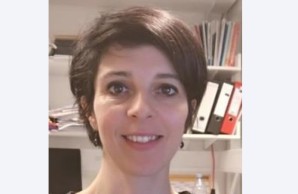
Liesbeth Lenaerts
Research Manager in the Gynaecological Oncology Laboratory
Herestraat 49, 3000 Leuven, Belgium
liesbeth.lenaerts@kuleuven.be

Tatjana Jatsenko
Postdoctoral Researcher in the Lab for Cytogenetics and Genome Research
Herestraat 49, 3000 Leuven, Belgium
tatjana.jatsenko@kuleuven.be

Hegel Hernandez
Coordinator Genomics Core Leuven
Herestraat 49, 3000 Leuven, Belgium
hegel.hernandez@kuleuven.be
-
-
Profile Liquid Biopsy Research
Cancer types Solid (breast ovarian, cervical, colorectal, lung) and hematological (Hodgkin’s lymphoma, multiple myeloma, diffuse large B cell lymphoma) tumors Clinical application early detection of cancer, cancer in pregnancy Liquid Biopsy Source blood plasma, urine Technologies available for liquid biopsy In house developed pipeline for CNA detection (GIPSeq); machine-learning-based cfDNA profiling pipeline for (pan)cancer detection and typing (GIPXplore); enzymatic-conversion-based methylation analyses: in-house deconvolution algorithms and single-read methylation analysis (under development). Scalable cloud-based platform to improve global accessibility and broad implementation of cfDNA analytical tools (under development). Biobank cell-free DNA (cfDNA) Key publications Lenaerts L, Vandenberghe P, Brison N, et al. Genomewide copy number alteration screening of circulating plasma DNA: potential for the detection of incipient tumors. Ann Oncol. 2019;30(1):85-95. doi:10.1093/annonc/mdy476
Amant F, Verheecke M, Wlodarska I, et al. Presymptomatic Identification of Cancers in Pregnant Women During Noninvasive Prenatal Testing. JAMA Oncol. 2015;1(6):814-819. doi:10.1001/jamaoncol.2015.1883
Bayindir B, Dehaspe L, Brison N, et al. Noninvasive prenatal testing using a novel analysis pipeline to screen for all autosomal fetal aneuploidies improves pregnancy management. Eur J Hum Genet. 2015;23(10):1286-1293. doi:10.1038/ejhg.2014.282
Vandenberghe P, Wlodarska I, Tousseyn T, et al. Non-invasive detection of genomic imbalances in Hodgkin/Reed-Sternberg cells in early and
advanced stage Hodgkin's lymphoma by sequencing of circulating cell-free DNA: a technical proof-of-principle study. Lancet Haematol. 2015;2(2):e55-e65. doi:10.1016/S2352-3026(14)00039-8
Lenaerts L, Brison N, Maggen C, et al. Comprehensive genome-wide analysis of routine non-invasive test data allows cancer prediction: A single-center retrospective analysis of over 85,000 pregnancies. EClinicalMedicine. 2021;35:100856. Published 2021 May 13. doi:10.1016/j.eclinm.2021.100856
Che H., Jatsenko T., Lenaerts L., et al. Pan-cancer detection and typing by mining patterns in large genome-wide cell-free DNA sequencing datasets. medRxiv 2022.02.16.22268780; doi: https://doi.org/10.1101/2022.02.16.22268780 (under revision)
- Kyushu University Beppu Hospital
- ELBS Team
- Profile Liquid Biopsy Research
-
Kyushu University Beppu Hospital
 Kyushu University Beppu Hosptial
Kyushu University Beppu Hosptial
Kyushu University Beppu Hospital was established in 1931 as a branch of the main hospital of Kyushu University in Fukuoka, Japan. We have four medical departments, such as surgery, internal medicine, orthopedics and the radiation in Beppu city. In our department, we have five senior surgeons for operations of 200 digestive system cancers and 100 breast cancers per year and are mentors who orchestrate a dozen graduate students as mentee for research works to disclose the bona-fide truth to eradicate cancers.
In our department of surgery, we organize a lab for basic and translational research work. At first, we are elucidating the cancer evolution to foster the intratumor heterogeneity (ITH) which have attracted increasing attention in the cancer research field because ITH presumably contributes to the therapeutic and diagnostic difficulties of cancer. We applied the recent technological innovation conducting the multiregional sequencing approach, which has been popularly used to understand ITH (Uchi R, PLoS Genet 2016, Saito T. Nat Commun 2018, Yokoyama A., Nature 2019).
The second, we have been enthusiastically identifying cancer specific transcriptomes, non-coding genes, genomic alterations and epigenomic aberrations in the body fluid as the "liquid biopsy" system for early diagnosis of postoperative recurrence, concealed cancers at subclinical level in primary tumors and prediction of the susceptibility to any treatments.
Anyway, it is a great honor for us to join the ELBS meeting, I would appreciate it for the chairperson Prof. Pantel and who may concern.
-
-
ELBS Team
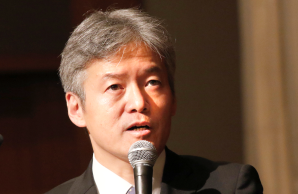
Prof. Koshi Mimori
4546 Tsurumihara,
Beppu 874-0838,
Japan
kmimori@beppu.kyushu-u.ac.jp

Takaaki Masuda
Lecture
4546 Tsurumihara
874-0838 Beppu
Japan
takaakimas@yahoo.co.jp
-
-
Profile Liquid Biopsy Research
Cancer types Digestive system cancers, and breast cancers Clinical application Early detection of recurrence and prediction of the susceptibility to treatment Liquid Biopsy Source Plasma, serum from cancer patients Technologies available for liquid biopsy Target re-sequencing, ddPCR Key publications Sugimachi K, Sakimura S, Kuramitsu S, Hirata H, Niida A, Iguchi T, Eguchi H, Masuda T, Morita M, Toh Y, Maehara Y, Suzuki Y, Mimori K. Serial mutational tracking in surgically resected locally advanced colorectal cancer with neoadjuvant chemotherapy. Br J Cancer. 119(4): 419-23. 2018
Ueda M, Iguchi T, Masuda T, Nakahara Y, Hirata H, Uchi R, Niida A, Momose K, Sakimura S, Chiba K, Eguchi H, Ito S, Sugimachi K, Yamasaki M, Suzuki Y, Miyano S, Doki Y, Mori M, Mimori K. Oncotarget. 7(38): 62280-91. 2016
Iwaya T, Fukagawa T, Suzuki Y, Takahashi Y, Sawada G, Ishibashi M, Kurashige J, Sudo T, Tanaka F, Shibata K, Endo F, Katagiri H, Ishida K, Kume K, Nishizuka S, Iinuma H, Wakabayashi G, Mori M, Sasako M, Mimori K. Contrasting expression patterns of histone mRNA and microRNA 760 in patients with gastric cancer. Clin Cancer Res. 19(23):6438-49. 2013
Mimori K, Fukagawa T, Kosaka Y, Kita Y, Ishikawa K, Etoh T, Iinuma H, Sasako M, Mori M. Hematogenous metastasis in gastric cancer requires isolated tumor cells and expression of vascular endothelial growth factor receptor-1. Clin Cancer Res. 14(9):2609-16. 2008.
Yokobori T, Iinuma H, Shimamura T, Imoto S, Sugimachi K, Ishii H, Iwatsuki M, Ota D, Ohkuma M, Iwaya T, Nishida N, Kogo R, Sudo T, Tanaka F, Shibata K, Toh H, Sato T, Barnard GF, Fukagawa T, Yamamoto S, Nakanishi H, Sasaki S, Miyano S, Watanabe T, Kuwano H, Mimori K, Pantel K, Mori M. Plastin3 is a novel marker for circulating tumor cells undergoing the epithelial-mesenchymal transition and is associated with colorectal cancer prognosis. Cancer Res. 73(7):2059-69. 2013
- MGZ – Medical Genetics Center
- ELBS Team
- Liquid Biopsy Profile
-
MGZ – Medical Genetics Center
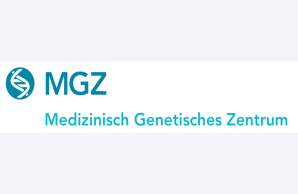
Besides the molecular diagnostics of germline genetic variants causal for hereditary diseases, we also focus on the detection of somatic variants, found in cancer and mosaic diseases.
Recent developments include several diagnostic tests for liquid biopsy analysis to support treatment decisions, detection of residual disease, disease monitoring, and even cancer screening. With the use of targeted hotspot assays and Duplex sequencing, we offer the sensitive and specific detection of clinically actionable variants present in lowest variant allele frequencies (VAFs) in plasma. In addition, we have developed a whole-genome sequencing (WGS) approach that enables highly sensitive, untargeted detection of ctDNA in all cancer patients regardless of tumor hotspot variants. By using distinct cutoffs for detection and quantification of ctDNA in all of our approaches, we can reliably detect residual disease after surgery as well as response or resistance to treatment.
-
-
ELBS Team
Ariane Hallermayr
Liquid Biopsy/ Biologist
Bayerstr. 3-5
80335 Munich
Germany
ariane.hallermayr@mgz-muenchen.de
Dr. Julia Romic-Pickl
Head of Research and Development / Biochemist
Bayerstr. 3-5
80335 Munich
Germany
julia.romic-pickl@mgz-muenchen.de
Dr. Thomas Keßler
NGS data interpretation and reporting / Biologist
Bayerstr. 3-5
80335 Munich
Germany
thomas.kessler@mgz-muenchen.de
Dr. Verena Steinke-Lange
Clinical geneticist
Bayerstr. 3-5
80335 Munich
Germany
Prof. Dr. Elke Holinski-Feder
Management / Clinical geneticist
Bayerstr. 3-5
80335 Munich
Germany
-
Liquid Biopsy Profile
Cancer types Solid tumors (e. g. colorectal cancer, non-small cell lung cancer, breast cancer) Clinical application Treatment decision, detection of minimal residual disease, treatment monitoring, early detection, molecular diagnostics of mosaic diseases Liquid Biopsy Source Blood plasma Technologies available for liquid biopsy Droplet Digital PCR (ddPCR)
Targeted Duplex sequencing
In-house developed pipeline for ctDNA detection based on fragmentation, epigenetic signatures and somatic copy number alterations (LIFE-CNA) including machine learning classifiersBiobank NA Key publications Hallermayr, A., Wohlfrom, T., Steinke-Lange, V.; Benet-Pagès, A.; Scharf, F.; Heitzer, E.; Mansmann, U.; Haberl, C.; de Wit, M.; Vogelsang, H.; Rentsch, M.; Holinski-Feder, E.; Pickl, J.M.A. Somatic copy number alteration and fragmentation analysis in circulating tumor DNA for cancer screening and treatment monitoring in colorectal cancer patients. J Hematol Oncol 2022, 15, 125.
Hallermayr, A.; Steinke-Lange, V.; Vogelsang, H.; Rentsch, M.; de Wit, M.; Haberl, C.; Holinski-Feder, E.; Pickl, J.M.A. Clinical Validity of Circulating Tumor DNA as Prognostic and Predictive Marker for Personalized Colorectal Cancer Patient Management. Cancers 2022, 14, 851.
Hallermayr, A.; Benet-Pagès, A.; Steinke-Lange, V.; Mansmann, U.; Rentsch, M.; Holinski-Feder, E.; Pickl, J.M.A. Liquid Biopsy Hotspot Variant Assays: Analytical Validation for Application in Residual Disease Detection and Treatment Monitoring. Clin. Chem. 2021, 67, 1483–1491.
- NIBSC
- ELBS Team
- Profile Liquid Biopsy Research
-
NIBSC
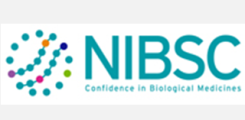
The National Institute for Biological Standards and Control (NIBSC, UK) is a centre of the MHRA and a global leader in the characterisation, standardisation and control of biological medicines. NIBSC is the world’s major developer and distributor of World Health Organisation (WHO) International Standards (ISs). WHO ISs are the ‘gold standards’ from which countries and manufacturers can calibrate their own working standards for biological testing. WHO ISs are prepared as a single homogeneous batch of several thousand ampoules, are intended to last many years, are not intended for routine use and act as calibrators of assays and secondary standards to enable the harmonization of the measurement of biological activity through traceability to a single common standard. NIBSC has endorsement from the WHO Expert Committee on Biological Standardization to develop WHO ISs for ctDNA. After the initial focus on the development of WHO ISs for EGFR variants (L858R, exon 19 deletions, and T790M) ctDNA and genomic DNA, NIBSC will expand the portfolio to other biomarkers. ctDNA WHO ISs should ideally be commutable with patients’ samples and allow harmonization of variant percentage, DNA fragment size(s), ctDNA yield, and gene copy numbers. Currently NIBSC is assessing the performance of several matrices with various cell-line derived fragmented DNAs to determine the optimal format for the standards, whilst cross-referencing to patient ctDNA materials and other reference materials already on the market.
-
-
ELBS Team
Malcolm Hawkins
Senior Scientist Biotherapeutics Division
Blanche Lane
South Mimms
Potters Bar
Hertfordshire
EN6 3QG, U.K.Malcolm.Hawkins@nibsc.org
-
Profile Liquid Biopsy Research
Cancer types Initial focus on EGFR variants (L858R, exon 19 deletions, and T790M) in ctDNA and genomic DNA. Clinical application ctDNA and genomic DNA WHO International Standards that mimic clinical specimens Liquid biopsy source Cell line derived fragmented DNA Technologies available for Liquid Biopsy Bulk, Freeze-dried fragmented DNA in plasma, digital PCR, NGS Publications Poster at “Research & Technology Series: Immuno-oncology meeting 10th-11th October 2019, titled: “Development of the First WHO International Standards for ctDNA”
- Netherlands Cancer Institute - COIN-Consortium
- ELBS Team
- Profile Liquid Biopsy Research
-
Netherlands Cancer Institute - COIN-Consortium

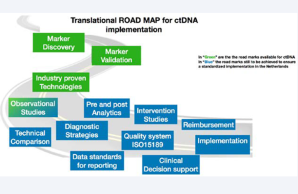
The COIN-consortium is a Dutch initiative in which a nation-wide team of multidisciplinary specialists are working together towards a coordinated clinical implementation of liquid biopsy ctDNA analysis as an innovative form of minimal invasive molecular diagnostics in the healthcare system of The Netherlands.
Over the past years multiple platforms have been developed to detect ctDNA, yielding industry-proven technologies suited for clinical implementation (see roadmap), yet, ctDNA clinical utility remains to be proven. The COIN-project aims to enable coordinated implementation of ctDNA diagnostics in clinical practice. The project consists of two parts. Part 1 aims to establish a generic multidisciplinary framework to guide successful clinical implementation of ctDNA and other future biomarkers. Challenges in (pre-)analysis, reporting, quality assurance, cost-effectiveness, clinical utility, and reimbursement will be addressed making use of the knowledge generated in multiple observational studies. These studies focus on colorectal and non-small cell lung cancer as there is a substantial and active ctDNA research community for these two tumor types. Part 2 of COIN is the first Dutch ctDNA biomarker-driven intervention study, MEDOCC-CrEATE, in which patients with stage II colon cancer will be offered adjuvant chemotherapy based on the presence of ctDNA in their blood after surgery. The intervention arm will be compared to current standard of care. The patient inclusion of MEDOCC-CrEATE started in June 2020.
Contact: COIN@nki.nl
-
-
ELBS Team
Daan van den Broek, PhD
Head Dept of Laboratory Medicine
The Netherlands Cancer Institute /Antoni van Leeuwenhoek
Da.vd.broek@nki.nl
Gerrit Meijer, Prof.
Head Research & Innovation Dept of Pathology; Head Division of Diagnostic Translational Oncology
The Netherlands Cancer Institute /Antoni van Leeuwenhoek
g.meijer@nki.nl
Veerle Coupé, PhD
Chair Decision Modelling Center
Amsterdam UMC
v.coupe@amsterdamumc.nl
Kim Monkhorst, PhD
Pathologist
The Netherlands Cancer Institute /Antoni van Leeuwenhoek
k.monkhorst@nki.nl
Ed Schuuring, Prof.
Head of the Laboratory for Molecular Pathology
UMCG Groningen
e.schuuring@umcg.nl
Marjolijn Ligtenburg, Prof.
Head of the Laboratory Tumor Genetics
Radboud University Medical Center
Marjolijn.Ligtenberg@radboudumc.nl
Ron van Schaik, Prof.
Head Dept. Clinical Chemistry
Erasmus MC University Medical Center Rotterdam
r.vanschaik@erasmusmc.nl
Thijs van Veghel
Clinical Informatician
IKNL, Innovation, Clinical Informatics and Data Science
t.vanvegchel@iknl.nl
Remond Fijneman, PhD
Associate Group Leader
Netherlands Cancer Institute, Pathology
r.fijneman@nki.nl
-
Profile Liquid Biopsy Research
Cancer types Colorectal cancer and non-small cell lung cancer Clinical application Detection of minimal residual disease, treatment response prediction and monitoring, detection of treatment resistant mechanisms Liquid Biobsy Source Blood, plasma Technologies available for liquid biopsy (multiple) PCR-based and NGS-based ctDNA technologies Biobank cell-free plasma (ctDNA), white blood cells (germline DNA), solid tumors (tumor DNA) Key publications Schraa SJ, van Rooijen KL, van der Kruijssen DEW, et al. Circulating tumor DNA guided adjuvant chemotherapy in stage II colon cancer (MEDOCC-CrEATE): study protocol for a trial within a cohort study. BMC Cancer. 2020;20(1):790. Published 2020 Aug 20. doi:10.1186/s12885-020-07252-y
Weber S, Spiegl B, Perakis SO, Ulz CM, Abuja PM, Kashofer K, van der Leest P, Azpurua MA, Tamminga M, Brudzewsky D, Rothwell DG, Mohan S, Sartori A, Lampignano R, Konigshofer Y, Sprenger-Haussels M, Wikman H, Bergheim IR, Kloten V, Schuuring E, Speicher MR, Heitzer E. (2020) Technical evaluation of commercial mutation analysis platforms and reference materials for liquid biopsy profiling. Cancers (Basel) 12, 1588.
Lampignano R, Neumann MHD, Weber S, Kloten V, Herdean A, Voss T, Groelz D, Babayan A, Tibbesma M, Schlumpberger M, Chemi F, Rothwell DG, Wikman H, Galizzi JP, Bergheim IR, Russnes H, Mussolin B, Bonin S, Voigt C, Musa H, Pinzani P, Lianidou E, Brady G, Speicher MR, Pantel K, Betsou F, Schuuring E, Kubista M, Ammerlaan W, Sprenger-Haussels M, Schlange T, Heitzer E. (2020) Multicenter evaluation of circulating cell-free DNA extraction and downstream analyese for the development of standardized (pre)analytical work flows. Clin Chem 1, 149–160.
van 't Erve I, Greuter MJE, Bolhuis K, Vessies DCL, Leal A, Vink GR, van den Broek D, Velculescu VE, Punt CJA, Meijer GA, Coupé VMH, Fijneman RJA. Diagnostic Strategies toward Clinical Implementation of Liquid Biopsy RAS/BRAF Circulating Tumor DNA Analyses in Patients with Metastatic Colorectal Cancer. J Mol Diagn. 2020 Sep 19:S1525-1578(20)30462-1. doi: 10.1016/j.jmoldx.2020.09.002. Online ahead of print. PMID: 32961317
van den Broek D, Hiltermann TJN, Biesma B, Dinjens WNM, 't Hart NA, Hinrichs JWJ, Leers MPG, Monkhorst K, van Oosterhout M, Scharnhorst V, Schuuring E, Speel EM, van den Heuvel MM, van Schaik RHN, von der Thüsen J, Willems SM, de Visser L, Ligtenberg MJL. Implementation of Novel Molecular Biomarkers for Non-small Cell Lung Cancer in the Netherlands: How to Deal with Increasing Complexity. Front Oncol. 2020 Jan 22;9:1521. doi: 10.3389/fonc.2019.01521. eCollection 2019. PMID: 32039011
- Pasteur Hospital
- ELBS Team
- Profile Liquid Biopsy Research
-
Pasteur Hospital
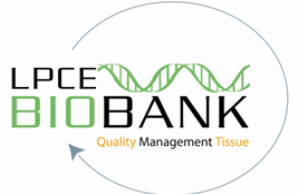
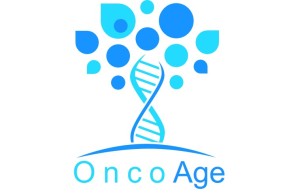
The Laboratory of Clinical and Experimental Pathology (LPCE) (Pasteur Hospital, University Côte d’Azur) founded in 2006 has an expertise mainly in lung and thyroid cancers and in melanoma. This laboratory developed pathology and biology diagnosis using different approaches (pathological and cytological diagnosis, immunohistochemistry, in situ hybridization and molecular biology using targeted or next generation sequencing). This laboratory is associated with the FHU OncoAge (www.oncoage.org) and the Institute for Ageing and Cancer of Nice (IRCAN, www.ircan.org). Moreover, a dedicated biobank has been set up in the LPCE (www.biobank-cotedazur) mainly focus on blood and tissue samples provided by patients with lung cancer, melanoma and thyroid diseases. A specific training program in biobanking has been created in 2016 (MSc Biobanks and Complex data Management, http://web.univ-cotedazur.fr//en/education/informations-utiles/les-informations-utiles/biobanks-complex-data). A liquid biopsy unit has been developed at the LPCE in 2009 in order to organize translational research programs which have been granted by the French NCI. Moreover, the liquid biopsy unit takes responsability for the detection of different predictive biomarkers in daily practice (EGFR mutations, ALK rearangement, BRAF/NRAS mutations, etc.) and participates to different clinical trials using both specific based PCR sequencing and next generation sequencing approaches with gene panels of different sizes.
-
-
ELBS Team

Prof. Paul Hofman, MD, PhD
Head of the Laboratory of Clinical and Experimental Pathology
BP 69, Nice
France
Hofman.p@chu-nice.fr
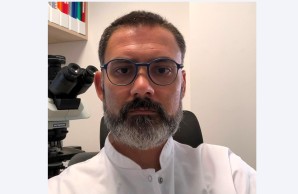
Prof Marius Ilié, MD, PhD
Deputy Director, Laboratory of Clinical and Experimental Pathology
BP 69, Nice
France
Ilie.m@chu-nice.fr
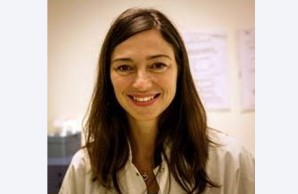
Dr Véronique Hofman, MD, PhD
Head of the CTC programs at the LPCE
BP 69, Nice
France
Hofman.v@chu-nice.fr
-
-
Profile Liquid Biopsy Research
Cancer types Lung cancer, melanoma (skin and ocular melanoma) & thyroid cancer Clinical application Early detection of lung cancer
Detection of predictive biomarkers
Identification of resistance mechanismsLiquid Biobsy Source Whole blood, plasma, sera, PBMCs, urines, saliva Technologies available for liquid biopsy CTC: CellSearch, ISET, Vortex,
cfDNA: NGS S5, Genereader, COBAS, IDYLLABiobank www.biobank-cotedazur.fr : Lung and thyroid cancers and melanoma (tissue and liquid samples) Key publications Marquette CH, Boutros J, Benzaquen J, Ferreira M, Pastre J, Pison C, Padovani B, Bettayeb F, Fallet V, Guibert N, Basille D, Ilie M, Hofman V, Hofman P; AIR project Study Group. Circulating tumour cells as a potential biomarker for lung cancer screening: a prospective cohort study. Lancet Respir Med. 2020 Jul;8(7):709-716.
Heeke S, Hofman V, Ilié M, Allegra M, Lespinet V, Bordone O, Benzaquen J, Boutros J, Poudenx M, Lalvée S, Tanga V, Salacroup C, Bonnetaud C, Marquette CH, Hofman P. Prospective evaluation of NGS-based liquid biopsy in untreated late stage non-squamous lung carcinoma in a single institution. J Transl Med. 2020 Feb 17;18(1):87.
Hofman P, Heeke S, Alix-Panabières C, Pantel K. Liquid biopsy in the era of immuno-oncology: is it ready for prime-time use for cancer patients? Ann Oncol. 2019 Sep 1;30(9):1448-1459.
Calabrese F, Lunardi F, Pezzuto F, Fortarezza F, Vuljan SE, Marquette C, Hofman P. Are There New Biomarkers in Tissue and Liquid Biopsies for the Early Detection of Non-Small Cell Lung Cancer? J Clin Med. 2019 Mar 26;8(3):414.
Ilié M, Szafer-Glusman E, Hofman V, Chamorey E, Lalvée S, Selva E, Leroy S, Marquette CH, Kowanetz M, Hedge P, Punnoose E, Hofman P. Detection of PD-L1 in circulating tumor cells and white blood cells from patients with advanced non-small-cell lung cancer. Ann Oncol. 2018 Jan 1;29(1):193-199.
- Stavanger University Hospital
- ELBS Team
- Profile Liquid Biopsy Research
-
Stavanger University Hospital

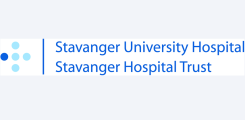
Stavanger University Hospital is the only hospital in the large area of south Rogaland on the west coast of Norway. The hospital covers a population of approximately 460.000 inhabitants; the hospital has 785 beds and nearly 8000 employees. Research is one of the main four tasks of the hospital, and cancer is one of the major diagnoses treated.
The main research areas at the Department of Hematology and Oncology are translational research, clinical trials and development of new treatment strategies. The main focus for the micrometastasis research group at the department is translational research on breast and pancreatic cancer, with a special focus on circulating/disseminated tumor cells and circulating tumor DNA detection. The micrometastasis group has a broad collaboration including both national and international partners, like Karolinska Institutet and the University of Texas M.D. Anderson Cancer Center and was recently acknowledged to be part of The Norwegian Cancer Society’s national expert group on pancreatic cancer. Our micrometastasis research group is located in the Laboratory for molecular biology, a modern multi-disciplinary core facility for cancer research, founded in 2007, with state-of-the art infrastructure and instruments that facilitates a wide range of molecular analyses.
-
-
ELBS Team

Bjørnar Gilje (MD, PhD)
Head at Department of Hematology and Oncology
Gerd-Ragna Bloch Thorsens gate 8,
4019 Stavanger,
Norway
bjornar.gilje@sus.no

Oddmund Nordgård (PhD)
Chief engineer/Professor
Gerd-Ragna Bloch Thorsens gate 8,
4019 Stavanger,
Norway
oddmund.nordgard@sus.no

Kjersti Tjensvoll (PhD)
Chief engineer/Researcher
Gerd-Ragna Bloch Thorsens gate 8,
4019 Stavanger,
Norway
kjersti.tjensvoll@sus.no
-
-
Profile Liquid Biopsy Research
Cancer types Breast and pancreatic cancer Clinical application Early detection of relapse, disease monitoring, monitoring of therapy response Liquid Biobsy Source Blood, plasma, bone marrow Technologies available for liquid biopsy Next generation sequencing (Ion Chief, S5, Proton), digital droplet PCR, LightCycler 480, Flow cytometry, Immunofluoresence microscopy with cell picking. Biobank Liquid biopsies (DNA/RNA from CTCs, plasma, bone marrow)
The PACT-ACT biobank contains blood and plasma samples collected from advanced pancreatic cancer patients before initiation of treatment and every months during chemotherapy, as well as bone marrow samples collected before and after treatment start (PI: Bjørnar Gilje).
The Prospective Breast Cancer Biobank (PBCB), a regional biobank containing blood, urine and plasma/serum samples collected every 6/12 months for 11 years from 1100 patients with early breast cancer. Patients reported outcome measure (PROM) are also collected, yearly (PIs: Gunnar Mellgren and Håvard Søiland)Key publications Tjensvoll K, Nordgård O, Skjæveland M, Oltedal S, Janssen EAM, Gilje B. Detection of disseminated tumor cells in bone marrow predict late recurrences in operable breast cancer patients. BMC Cancer. 2019 Nov 21;19(1):1131
Lapin M, Oltedal S, Tjensvoll K, Buhl T, Smaaland R, Garresori H, Javle M, Glenjen NI, Abelseth BK, Gilje B, Nordgård O. Fragment size and level of cell-free DNA provide prognostic information in patients with advanced pancreatic cancer. Transl Med. 2018 Nov 6;16(1):300
Nordgård O, Tjensvoll K, Gilje B, Søreide K. Circulating tumour cells and DNA as liquid biopsies in gastrointestinal cancer. Br J Surg. 2018 Jan;105(2):e110-e120. Review
Lapin M, Tjensvoll K, Oltedal S, Buhl T, Gilje B, Smaaland R, Nordgård O. MINDEC-An Enhanced Negative Depletion Strategy for Circulating Tumour Cell Enrichment. Sci Rep. 2016 Jul 19;6:28929
Tjensvoll K, Lapin M, Buhl T, Oltedal S, Steen-Ottosen Berry K, Gilje B, Søreide JA, Javle M, Nordgård O, Smaaland R. Clinical relevance of circulating KRAS mutated DNA in plasma from patients with advanced pancreatic cancer. Mol Oncol. 2016 Apr;10(4):635-43
- Toulouse University Cancer Institute-Oncopole
- ELBS Team
- Profile Liquid Biopsy Research
-
Toulouse University Cancer Institute-Oncopole

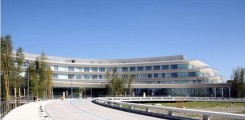

The Oncopole site of Toulouse University Cancer Institute (IUCT-O), together with Cancer Research Center of Toulouse (CRCT), is a Comprehensive Cancer Center member of Organization of European Cancer Institutes (OECI) offering pioneering therapies and technologies. IUCT‑O has three missions, treatment, research (clinical trials, care management and translational research) and teaching, IUCT-located in the heart of a campus grouping together public and private stakeholders involved in the fight against cancer from basic science to clinical trials. The Prospective Biology Unit within the Medical Laboratory of IUCT-O is dedicated to clinical research, innovation and medico-economic evaluation of liquid biopsies in cancers. Together with clinicians and CRCT research teams and the support of CRCT technology cluster (cell imaging, genomic and transcriptomic with single cell analysis …), we take an active part in translational research and clinical trials. Our projects focus on the development of new circulating biological markers for diagnosis, prognosis, longitudinal follow-up of the disease and prediction of therapeutic response, with the molecular analysis of circulating tumor DNA, enrichment and phenotypic characterization of circulating tumor cells, quantification of circulating miRNAs, using innovative technologies such as digital droplet PCR for ctDNA analysis, ISET technology for CTC enrichment or nCounter Analysis System (Nanostring) for miRNA assays.
-
-
ELBS Team

Prof. Gilles Favre
Director of the Cancer Research Center of Toulouse
1 av Irene Joliot-Curie
31059 Toulouse cedex 9
France
favre.gilles@iuct-oncopole.fr
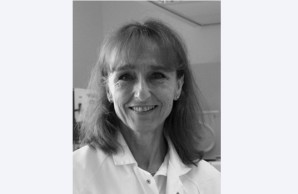
Anne Pradines, PhD
Prospective Biology Unit leader
1 av Irene Joliot-Curie
31059 Toulouse cedex 9
France
pradines.anne@iuct-oncopole.fr
-
-
Profile Liquid Biopsy Research
Cancer types Solid tumors (lung, melanoma, breast, ovarian cancer, prostate) Clinical application Early detection of primary cancer and relapse, monitoring of therapy response, identification of therapy targets and resistance mechanisms Liquid Biobsy Source Blood, plasma Technologies available for liquid biopsy ddPCR, Target re-sequencing Biobank Plasma, PBMC Key publications Guibert N, Pradines A, Favre G, Mazieres J. Current and future applications of liquid biopsy in nonsmall cell lung cancer from early to advanced stages. Eur Respir Rev. 2020;29(155):190052.
Guibert N, Jones G, Beeler JF, et al. Targeted sequencing of plasma cell-free DNA to predict response to PD1 inhibitors in advanced non-small cell lung cancer. Lung Cancer. 2019;137:1–6
Keller L, Guibet N, Delaunay M, Casanova A, Farella M, Brayer S, Gilhodes J, Martin E, Favre G, Pradines A, Meyer N. Early ctDNA variation predicts tumor response in melanoma patients treated with immunotherapy. Acta Dermato 2019 ; 99: 206–210.
Guibert N, Delaunay M, Lusque A, et al. PD-L1 expression in circulating tumor cells of advanced non-small cell lung cancer patients treated with nivolumab. Lung Cancer. 2018;120:108–112.
Guibert N, Pradines A, Farella M, Casanova A, Gouin S, Keller L, Favre G, Mazieres J. Monitoring KRAS mutations in circulating DNA and tumor cells using digital droplet PCR during treatment of KRAS-mutated lung adenocarcinoma. Lung Cancer 2016; 100: 1-4.
- University Cancer Center Schleswig-Holstein
- ELBS Team
- Profile Liquid Biopsy Research
-
University Cancer Center Schleswig-Holstein

„Molecular Therapies“ group at the University Cancer Center Schleswig-Holstein, Campus Lübeck
Our research focus includes preclinical and clinical development of targeted treatment strategies in cancer, molecular mechanisms of therapy resistance and disease persistence, and nucleic acid-based biomarkers. In the past, we elucidated molecular mechanisms leading to resistance to targeted cancer treatment in leukemia and solid tumors, and developed strategies to prevent and overcome treatment resistance. More recently, we conduct clinical trials establishing PCR-based liquid biopsy techniques for early treatment monitoring and prediction of relapse in melanoma, gastrointestinal stromal tumor and lung cancer. Using informative disease models, we identified novel treatment targets in leukemia and solid tumors, including CSF2RB as in FLT3-ITD positive acute myeloid leukemia. We put a strong focus on implementing a standardized molecular, genetic and bioinformatic workflow for precision oncology in a clinical setting and contributed in establishing a Molecular Tumor Board (MTB) at the University Cancer Center Schleswig-Holstein.
-
-
ELBS Team
Prof. Dr. Nikolas von Bubnoff
Head of the Molecular Therapies WG
Nikolas.vonbubnoff@uksh.de
-
Profile Liquid Biopsy Research
Cancer types melanoma, GIST, colon-, pancreas- carcinoma, lung, bladder, mastocytosis, choroidal melanoma Clinical application therapy monitoring, diagnostics, prediction of relapse Liquid Biopsy Source Blood, bile, urine, bone marrow aspirat (ctDNA, gDNA, EVs) Technologies available for liquid biopsy FACS, Nanoparticle Tracking Analysis, Digital Droplet PCR Biobank Broad Consent, Sample collection and transport (surgery, clinical departments, pathology), sample processing of fluid and solid samlpes (automated aliquoting of serum, plasma, urine; PBMC isolation; automated DNA extraction, tissue preparation), sample storage (-80°C, automated cryostorage (-190°C)), data management (CentraXX), certified QM System (DIN EN ISO 9001:2015) Key publications Charlet A, Kappenstein M, Keye P, Kläsener K, Endres C, Poggio T, Gorantla SP, Kreutmair S, Sänger J, Illert AL, Miething C, Reth M, Duyster J, Rummelt C, von Bubnoff N. The IL-3, IL-5, and GM-CSF common receptor beta chain mediates oncogenic activity of FLT3-ITD-positive AML. Leukemia. 2021 Nov 8. doi: 10.1038/s41375-021-01462-4. PMID: 34750506.
Waldeck S, Mitschke J, Wiesemann S, Rassner M, Andrieux G, Deuter M, Mutter J, Lüchtenborg AM, Kottmann D, Titze L, Zeisel C, Jolic M, Philipp U, Lassmann S, Bronsert P, Greil C, Rawluk J, Becker H, Isbell L, Müller A, Doostkam S, Passlick B, Börries M, Duyster J, Wehrle J, Scherer F, von Bubnoff N. Early assessment of circulating tumor DNA after curative-intent resection predicts tumor recurrence in early-stage and locally advanced non-small-cell lung cancer. Mol Oncol. 2021 Oct 15. doi: 10.1002/1878-0261.13116. PMID: 34653314.
Hoefflin R, Lazarou A, Hess ME, Reiser M, Wehrle J, Metzger P, Frey AV, Becker H, Aumann K, Berner K, Boeker M, Buettner N, Dierks C, Duque-Afonso J, Eisenblaetter M, Erbes T, Fritsch R, Ge IX, Geißler AL, Grabbert M, Heeg S, Heiland DH, Hettmer S, Kayser G, Keller A, Kleiber A, Kutilina A, Mehmed L, Meiss F, Poxleitner P, Rawluk J, Ruf J, Schäfer H, Scherer F, Shoumariyeh K, Tzschach A, Peters C, Brummer T, Werner M, Duyster J, Lassmann S, Miething C, Boerries M, Illert AL, von Bubnoff N. Transitioning the Molecular Tumor Board from Proof of Concept to Clinical Routine: A German Single-Center Analysis. Cancers (Basel). 2021 Mar 8;13(5):1151. doi: 10.3390/cancers13051151. PMID: 33800365; PMCID: PMC7962829.
Zeiser R*, von Bubnoff N*, Butler J, Mohty M, Niederwieser D, Or R, Szer J, Wagner EM, Zuckerman T, Mahuzier B, Xu J, Wilke C, Gandhi KK, Socié G; REACH2 Trial Group. Ruxolitinib for Glucocorticoid-Refractory Acute Graft-versus-Host Disease. N Engl J Med. 2020 May 7;382(19):1800-1810. * equal contribution.
Braune J, Keller L, Schiller F, Graf E, Rafei-Shamsabadi D, Wehrle J, Follo M, Philipp U, Hussung S, Pfeiger D, Mix M, Duyster J, Fritsch R, von Bubnoff D, Meiss F, von Bubnoff N. Circulating Tumor DNA Allows Early Treatment Monitoring in BRAF- and NRAS-Mutant Malignant Melanoma. JCO Precision Oncology 2020, 4 (2020) 20-31.
- University Hospital Essen
- ELBS Team
- Profile Liquid Biopsy Research
-
University Hospital Essen
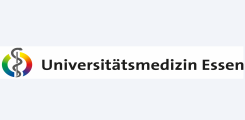
The laboratories at the Department of Dermatology at the University Hospital Essen are primarily focused on the diagnosis and therapy of skin tumors with the goal of transferring research results directly into the clinic. The main research focus is on malignant melanoma, a malignant tumor that originates from pigment producing cells of the skin called melanocytes. Melanoma is an aggressive tumor with dramatically reduced patient survival when disseminated to distant organs. Despite the historic success of modern cancer drugs, the cure of patients is hampered by the dramatic tumor heterogeneity and plasticity of melanoma leading to therapy failure in most cases and limited diagnostic options to monitor therapy response/resistance over time. The Tumor Heterogeneity and Plasticity lab (headed by Prof. Dr. med. Alexander Roesch) has dedicated reasearch projects towards finding ways to overcome the intrinsic therapy resistance of melanoma cell subpopulations in vitro and in vivo. Specifically, the lab focuses on the characterization of tumor heterogeneity, phenotypic plasticity of melanoma cell subpopulations, bioenergetic metabolism, and histone 3 K4 demethylases. Translational research questions are concentrated on how to overcome inter- and intra-tumor heterogeneity in patients. Liquid biopsies, comprising of the noninvasive analysis of circulating tumor-derived material in the blood, represent an innovative tool in precision oncology and provide a potential way to overcome current limitations associated with tissue biopsies.
For further details feel free to visit our department’s website and follow our group on Twitter (@LabRoesch).
-
-
ELBS Team

Prof. Dr. med. Alexander Roesch
Group leader of Tumor Heterogeneity and Plasticity
Hufelandstrasse 55
45147 Essen, Germany
alexander.roesch@uk-essen.de
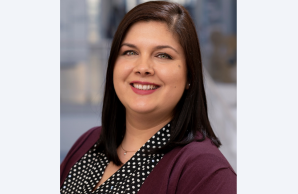
Dr.rer.nat. Renata Varaljai
Postdoctoral scientist
Hufelandstrasse 55
45147 Essen, Germany
renata.varaljai@uk-essen.de
-
-
Profile Liquid Biopsy Research
Cancer types Melanoma Clinical application Monitoring of therapy response, early detection of relapse and resistance Liquid Biobsy Source Blood, plasma Technologies available for liquid biopsy qPCR, digital PCR Biobank SCABIO (Skin Cancer Biobank) Key publications Liquid Biopsy
Renáta Váraljai, Salma Elouali, Smiths S. Lueong, Kilian Wistuba-Hamprecht, Teofila Seremet, Jens T. Siveke, Jürgen. C. Becker, Antje Sucker, Annette Paschen, Peter A. Horn, Bart Neyns, Benjamin Weide, Dirk Schadendorf, Alexander Roesch: The predictive and prognostic significance of cell-free DNA concentration in melanoma. JEADV, DOI: 10.1111/jdv.16766 (2020)
Martin Metzenmacher, Renáta Váraljai, Balazs Hegedüs, Igor Cima, Jan Forster, Alexander Schramm, Björn Scheffler, Peter Horn, Christoph Klein, Tibor Szarvas, Henning Reis, Nicola Bielefeld, Alexander Roesch, Clemens Aigner, Volker Kunzmann, Marcel Wiesweg, Jens Siveke, Martin Schuler, Smiths Lueong: Plasma next generation sequencing and droplet digital-qPCR-based quantification of circulating cell-free RNA for non-invasive early detection of cancer. Cancers, 02/2020; 12(2), 353, DOI: 10.3390/cancers12020353 (2020)
Renáta Váraljai, Kilian Wistuba-Hamprecht, Teofila Seremet, Joey Mark S. Diaz, Jérémie Nsengimana, Antje Sucker, Jan-Malte Placke, Peter A. Horn, Nils von Neuhoff, Batool Shannan, Heike Chauvistré, Felix C. E. Vogel, Susanne Horn, Jürgen C. Becker, Julia Newton-Bishop, Andreas Stang, Bart Neyns, Benjamin Weide, Dirk Schadendorf, Alexander Roesch: Application of circulating cell-free tumor DNA profiles for therapeutic monitoring and outcome prediction in genetically heterogeneous metastatic melanoma. JCO Precision Oncology, DOI: 10.1200/PO.18.00229 (2019)
Other translational projects
Jan C. Brase, Robert F. H. Walter, Alexander Savchenko, Daniel Gusenleitner, James Garrett, Tobias Torsten Schimming, Renáta Váraljai, Deborah Castelletti, Ju-Young Kim, Naveen K Dakappagari, Ken Schultz, Caroline Robert, Georgina V. Long, Dr. Paul D Nathan, Antoni Ribas, Keith T. Flaherty, Boguslawa Karaszewska, Jacob Schachter, Antje Sucker, Kurt W Schmid, Lisa Zimmer, Elisabeth Livingstone, Eduard Gasal, Dirk Schadendorf, Alexander Roesch: Role of Tumor-Infiltrating B Cells in Clinical Outcome of Patients with Melanoma Treated With Dabrafenib Plus Trametinib. Clin Cancer Res, June 9 2021 DOI: 10.1158/1078-0432.CCR-20-3586
B. Shannan, J. Matschke, H. Chauvistré, F. Vogel, D. Klein, F. Meier, D. Westphal, J. Bruns, R. Rauschenberg, J. Utikal, A. Forschner, C. Berking, P. Terheyden, E. Dabrowski, R. Gutzmer, D. Rafei-Shamsabadi, F. Meiss, L. Heinzerling l, L. Zimmer, Elisabeth Livingstone, R. Váraljai, A. Hoewner, S. Horn, J. Klode, M. Stuschke, B. Scheffler, A. Marchetto, G. Sannino,T.G.P. Gruenewald, D. Schadendorf, V. Jendrossek, A. Roesch: Sequence-dependent cross-resistance of combined radiotherapy plus BRAFV600E inhibition in melanoma. Eur J Cancer, 03/2019; Volume 109, Pages 137-153
- University Medical Center Hamburg-Eppendorf
- ELBS Team
- Profile Liquid Biopsy Research
-
University Medical Center Hamburg-Eppendorf
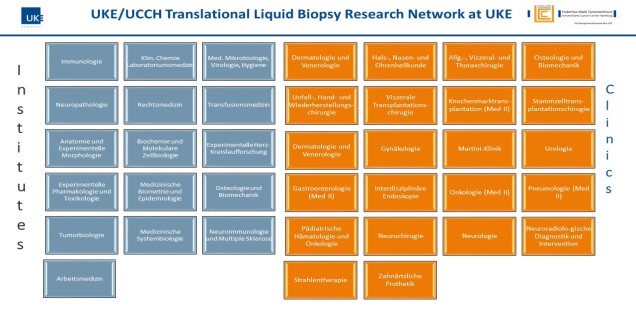 The Liquid Biopsy Translational Research Network at UKE
The Liquid Biopsy Translational Research Network at UKE
It is part of the Univerity Cancer Center Hamburg (UCCH), one of the top cancer center ("Onkologisches Spitzenzentren")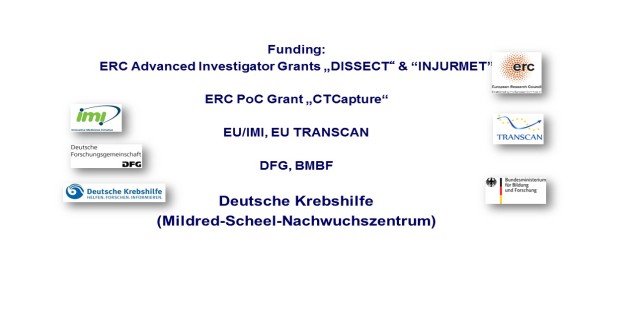 Funding
Funding
Individual projects are funded by highly competitive EU grants (ERC, IMI, ERA-Net Transcan, Marie Curie-Sklodowaska Training network).The Liquid Biopsy Translational Research Network at UKE has been established by Klaus Pantel and is part of the University Cancer Center Hamburg (UCCH, Director: Prof. Carsten Bokemeyer), one of the top cancer centers („Onkologische Spitzenzentren“) funded by the German Cancer Aid („Deutsche Krebshilfe“) which also funds a novel post-graduate training center for clinical and translational scientists („Mildred-Scheel Nachwuchszentrum“) at UCCH focusing on cancer cell dissemination/metastasis and liquid biopsy. The network has published more than 300 reports (mostly on clinical studies in patients with various types of solid tumors) and individual projects are funded by highly competitive EU grants (ERC, IMI, ERA-Net TRANSCAN, Marie Curie-Sklodowska Training networks).
-
-
ELBS Team

Prof. Klaus Pantel
Chairman of Institut of Tumorbiologie
Martinistr. 52
20246 Hamburg
Germany
pantel@uke.de
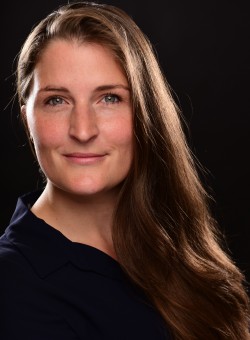
Claudia Koch, M.Sc.
Project manager ELBS
Martinistr. 52
20246 Hamburg
Germany
c.koch@uke.de
-
-
Profile Liquid Biopsy Research
Cancer types Solid tumors (e.g., prostate, breast, lung, GI-tract, melanoma, bladder, cervical cancer) Clinical application Early detection of primary cancer and relaps (MRD), monitoring of therapy response, identification of therapy targets and resistance mechanisms Liquid Biopsy source Blood, plasma, bone marrow Technologies available for Liquid Biopsy CellSearch; Parsortix; others Biobank Solid tumors (CTCs, plasma) Key publications Keller L, Pantel K. Unravelling tumour heterogeneity by single-cell profiling of circulating tumour cells. Nat Rev Cancer 2019;19: 553-67.
Pantel K, Alix-Panabieres C. Liquid biopsy and minimal residual disease - latest advances and implications for cure. Nat Rev Clin Oncol. 2019;16: 409-24.
Bidard FC, Michiels S, Riethdorf S, Mueller V, Esserman LJ,...Pierga JY, Pantel K. Circulating Tumor Cells in Breast Cancer Patients Treated by Neoadjuvant Chemotherapy: A Meta-analysis. JNCI. 2018.
Werner S, Brors B, Eick J, Marques E, Pogenberg V, Parret A, Kemming D, Wood AW, Edgren H, Neubauer H, Streichert T, Riethdorf S, Bedi U, Baccelli I, Jucker M, Eils R, Fehm T, Trumpp A, Johnsen SA, Klefstrom J, Wilmanns M, Muller V, Pantel K*, Wikman H*. Suppression of early hematogenous dissemination of human breast cancer cells to bone marrow by retinoic Acid-induced 2. Cancer Discov. 2015;5: 506-19. (*shared senior authorship)
Muller C, Holtschmidt J, Auer M, Heitzer E, Lamszus K, Schulte A, Matschke J, Langer-Freitag S, Gasch C, Stoupiec M, Mauermann O, Peine S, Glatzel M, Speicher MR, Geigl JB, Westphal M, Pantel K*, Riethdorf S. Hematogenous dissemination of glioblastoma multiforme. Sci Transl Med. 2014;6: 247ra101. (*shared senior authorship)
- University of Gothenburg
- ELBS Team
- Profile Liquid Biopsy Research
-
University of Gothenburg

University of Gothenburg is among the largest universities in Northern Europe (approx. 47,000 students and 6,000 employees). With eight faculties, University of Gothenburg is also the most wide-ranging and versatile university in Sweden. University of Gothenburg is an active international university engaged in collaborative projects and partnerships globally. Institute of Biomedicine at Sahlgrenska Academy, the medical faculty at University of Gothenburg, has an extensive involvement in education and research. The research activities are many and diverse, but primarily fall into one of four key areas: Infection and Immunology, Cancer and Stem Cell Biology, Genetics and Molecular Medicine, and Cell and Molecular Biology including Glycobiology. The institute actively strives to create environments for translational research, promoting constellations of pre-clinical and clinical groups with extensive international collaborations.
-
-
ELBS Team

Anders Ståhlberg, Associate Professor
Group Leader and Head of Translational Genomics Platform
Sahlgrenska Center for Cancer Research
Medicinaregatan 1F
413 90 Gothenburg
Sweden
anders.stahlberg@gu.se
-
-
Profile Liquid Biopsy Research
Cancer types Solid tumors Clinical application Monitoring of treatment efficacy and early detection of therapy resistance and relapse Liquid Biobsy Source Blood, plasma, urine Technologies available for liquid biopsy Methods for cell-free DNA-, RNA- and protein analysis as well as single-cell technologies. Focus on ultrasensitive sequencing, especially SiMSen-Seq. Biobank Blood, plasma, urine Key publications Johansson G, Kaltak M, Rîmniceanu C, Singh AK, Lycke J, Malmeström C, Hühn M, Vaarala O, Cardell S, Ståhlberg A. Ultrasensitive DNA immune repertoire sequencing using unique molecular identifiers. Clinical Chemistry, 2020, 20:hvaa159.
Andersson D, Fagman H, Dalin M, Ståhlberg A. Circulating cell-free tumor DNA analysis in pediatric cancers. Molecular Aspects of Medicine, 2020, 72:100819.
Johansson G, Andersson D, Filges S, Li J, Muth A, Godfrey TE, Ståhlberg, A. Considerations and quality controls when analyzing cell-free tumor DNA. Biomolecular Detection and Quantification, 2019, 17:100078.
Ståhlberg A, Krzyzanowski PM, Egyud M, Filges S, Stein L, Godfrey TE. Simple multiplexed PCR-based barcoding of DNA for ultra-sensitive mutation detection by next-generation sequencing (SiMSen-Seq). Nature Protocols, 2017, 12:664-82.
Ståhlberg A, Krzyzanowski PM, Jackson JB, Egyud M, Stein L, Godfrey TE. Simple, multiplexed, PCR-based barcoding of DNA enables sensitive mutation detection in liquid biopsies using sequencing. Nucleic Acids Research, 2016, 44:e105
- University of Patras
- ELBS Team
- Profile Liquid Biopsy Research
-
University of Patras


University of Patras was founded in 1964. It has 3.931 Postgraduate students, 35 Departments, 161 Laboratories and 17 Clinics, The Department of Biology was founded in 1967 and is the first Department of Biology founded in Greece. The Department provides studies on all aspects of Biological science. The research activities of the members of the department cover a wide range of cutting-edge biological technologies. The Department of Biology is housed in a building of 25000 sq.m. and has a significant infrastructure of scientific equipment distributed in educational and research laboratories.
The Laboratory of Biochemistry/Liquid Biopsy situated in the Department of Biology is focused on the Evaluation of signal transduction pathways in Cancer Cells. Enumeration and Characterization of Circulating and Disseminated Tumor Cells (CTCs/DTCs). Investigation of the crosstalk between CTCs and Immune Cells. Development of innovative diagnostic tools for the detection of circulating tumor cells (CTCs) in patients' blood. Assessment of tailor-made substrates for three-dimensional (3D) cultures of tumor cells and CTCs to test drug efficacy (laser-made 3D scaffolds induced on natural biopolymer films). Participation in the development of hyperspectral artificial vision-guided robotic microscope for fixed cells and live cell imaging (CTCs).
-
-
ELBS Team
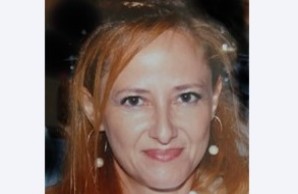
Galatea Kallergi, Msc, PhD
Assistant Professor of Biochemistry, Division of Genetics, Cell and Developmental Biology
Department of Biology
University of Patras
26504 Patras
Greecegalkallergi@gmail.com
-
-
Profile Liquid Biopsy Research
Cancer types Breast Cancer, Colon Cancer, NSCLC, SCLC etc Clinical application Identification of new biomarkers and therapeutic targets on CTCs, Exosomes etc. Development of new methods for culturing and imaging CTCs for testing drug efficacy. Liquid Biopsy source Blood, plasma, Bone marrow Technologies available for Liquid Biopsy High Resolution Image Analysis systems (ZEISS Axioscope), Transmission Electron Microscope (TEM), Scanning Electron Microscope (SEM), Real Time -PCR etc Biobank Isolated CTCs from patients with solid tumors, ISET Filters with CTCs from NSCLC and Breast Cancer patients. Key publications G. Kallergi, O. Hoffmann, AK. Bittner, L. Papadimitriou, N Zacharopoulou, M. Zervakis, S. Sfakianakis, C. Stournaras, V. Georgoulias, R. Kimmig, S. Kasimir-Bauer. CXCR4 and JUNB double positive disseminated tumor cells are frequently detected in breast cancer patients at primary diagnosis (Under press in Therapeutic Advances in Medical Oncology).
G. Kallergi, V. Tsintari, S Sfakianakis, E.S. Bei, N. Zacharopoulou, C. Stournaras, M. Zervakis and V. Georgoulias The prognostic value of JUNB-positive CTCs in metastatic breast cancer; from bioinformatics to immunophenotype. Breast Cancer Res. 2019 Aug 1;21(1):86..
G. Kallergi, D. Aggouraki, N. Zacharopoulou, C. Stournaras, V. Georgoulias, S.S. Martin. Evaluation of microtentacles on Circulating Tumor Cells (CTCs); Interaction between CTCs and blood cells through cytoskeletal proteins. Breast Cancer Res. 2018 Jul 5;20(1):67.
G, Kallergi, E.K. Vetsika, D. Agouraki, E. Lagoudaki, A. Koutsopoulos, F. Koinis , P. Katsarlinos, M. Trypaki, I. Messaritakis, C. Stournaras, V. Georgoulias, A. Kotsakis. Evaluation of PD-L1/PD-1 on Circulating Tumor Cells (CTCs) in patients with advanced non-small cell lung cancer (NSCLC). Therapeutic Advances in Medical Oncology Journal, 2018 Jan 15;10.
Agelaki, Melina Dragolia, H. Markonanolaki, S. Alkahtani, Ch. Stournaras, V. Georgoulias, G. Kallergi, Phenotypic characterization of circulating tumor cells (CTCs) in triple negative breast cancer patients (TNBC), Oncotarget 2017 Jan 17;8(3):5309-5322.